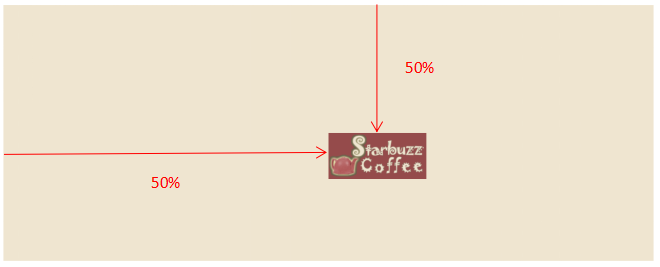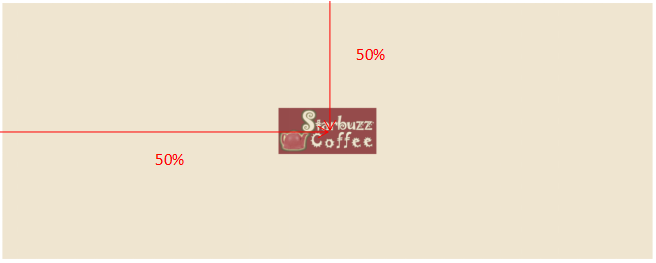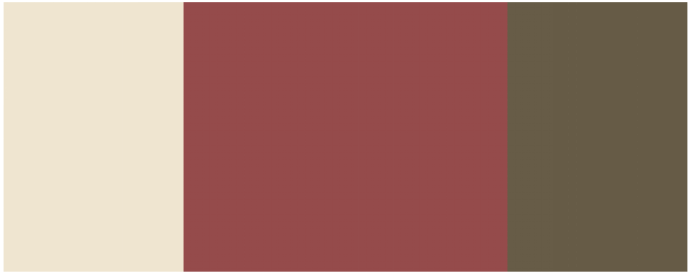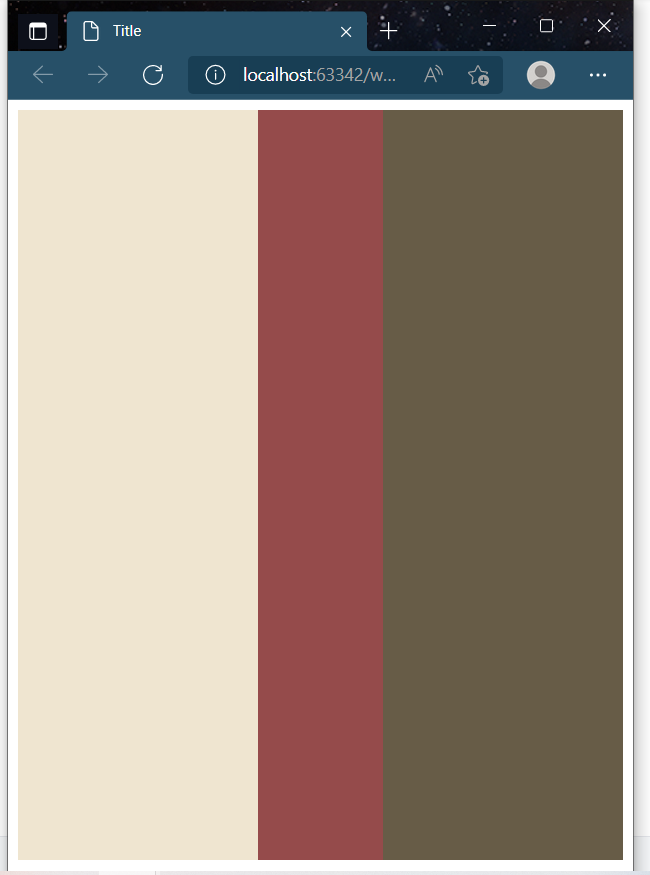水平垂直居中与三栏布局
1.水平垂直居中
<body> <div> <img src="images/headerLogo.gif" id="image"> </div> </body>
通过绝对定位position:absolute来实现
div{ width: 100%; height: 600px; background-color: #efe5d0; position: relative; } #image{ background-color: #954b4b; position: absolute; top: 50%; left: 50%; transform: translate(-50%,-50%); }
要记得绝对定位元素的容纳块是position属性值不为static的最近的祖辈元素,因此首先要将<img>元素的父元素<div>设置为position:relative,使其成为绝对定位元素<img>的容纳块。这里要注意一个细节,仅仅是将偏移属性top和left设置为50%是不够的,因为图片本身是有宽度和高度的,造成下面这种效果:

因此,利用变形属性transform对坐标轴进行偏移,实现水平垂直都居中。transform:translate(-50%,-50%),是以图像自身宽度和高度的50%作为坐标轴偏移量,相当于把图像的中心移到了top和left为50%的位置。

通过弹性盒布局display:flex来实现
div{ width: 100%; height: 600px; background-color: #efe5d0; display: flex; justify-content: center; align-items: center; } #image{ background-color: #954b4b; }
只需要将弹性容器<div>的主轴和垂轴的对齐方式设置为center即可,其子元素作为弹性元素就会按照弹性容器的布局要求进行排布。
通过栅格布局display:grid来实现
div{ width: 100%; height: 600px; background-color: #efe5d0; display: grid; grid-template-columns: 1fr; grid-template-rows: 1fr; } #image{ background-color: #954b4b; justify-self: center; align-self: center; }
整个栅格只有一行一列,这里使用justify-self和align-self我们对栅格元素来进行单独的布局,表示该栅格元素在所在栅格中水平垂直居中。
2.三栏布局
<body> <div id="left"></div> <div id="center"></div> <div id="right"></div> </body>
通过弹性盒布局实现
div{ width: 400px; height: 600px; } body{ display: flex; justify-content: space-between; align-items: flex-start; } #left{ background-color: #efe5d0; } #center{ background-color: #954b4b; flex: 1; min-width: 100px; } #right{ background-color: #675c47; }
这里将每个<div>都初始化为宽400px、高600px的矩形。将父元素<body>设置为弹性容器,按照容器设定的布局方式对源文档中的<div>按文档顺序进行排布,中间的弹性元素<div>的弹性增长因子设置为1,其余两个默认为0,这样就可以实现中间栏自适应调整宽度,同时设定中间栏最小宽度为100px,防止浏览器窗口缩小导致中间栏消失。

缩小后:
通过绝对定位实现
body{ position: relative; } #left{ width: 400px; height: 600px; background-color: #efe5d0; position: absolute; left: 0; } #center{ height: 600px; background-color: #954b4b; position: absolute; left: 400px; right: 400px; } #right{ width: 400px; height: 600px; background-color: #675c47; position: absolute; right: 0; }
首先得现将父元素<body>的position属性设置为relative,才能使<body>成为它三个子元素<div>的容纳块。这里中间栏的宽度width由偏移属性left和right共同确定,使它刚好填满中间空白区域。
通过浮动来实现
div{ width: 400px; height: 600px; } #left{ background-color: #efe5d0;
float: left; } #center{ background-color: #954b4b; float: left; width: calc(100% - 800px); } #right{ background-color: #675c47;
float: right; }
对于中间栏,需要使用计算式calc来重新计算其宽度,填满空白区域。使用浮动实现的三栏布局,在窗口缩得足够小的时候(<800px)会导致中间栏消失且右边栏换行,造成布局混乱。
通过栅格布局实现
div{ height: 600px; } body{ display: grid; grid-template-columns: 400px 1fr 400px; grid-template-rows: 1fr; } #left{ background-color: #efe5d0; } #center{ background-color: #954b4b; } #right{ background-color: #675c47; }
这里将栅格容器的中间列设为一份(fr)单元格,就可以自适应调整中间栏宽度,填满空白区域。






 浙公网安备 33010602011771号
浙公网安备 33010602011771号